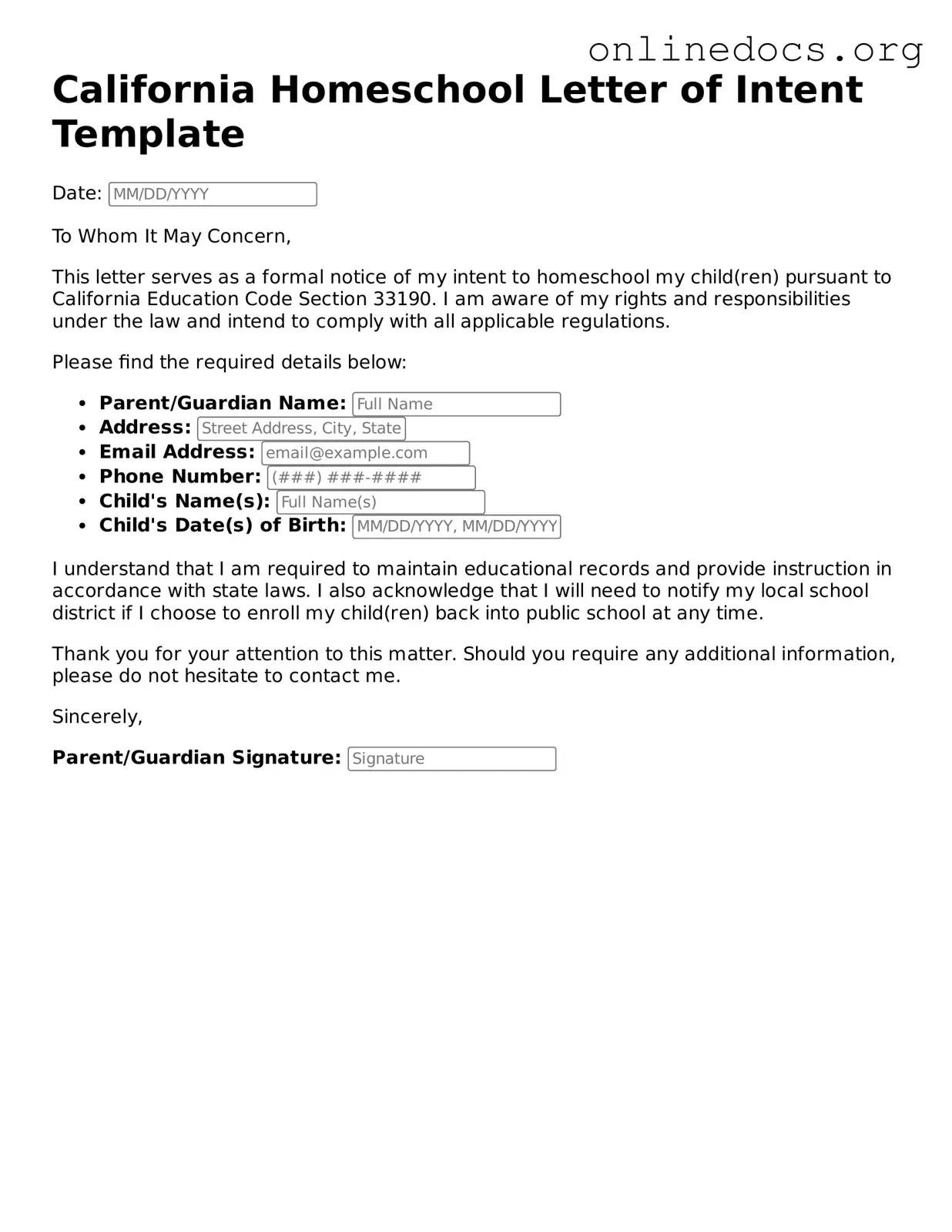Filling out the California Homeschool Letter of Intent form can be a straightforward process, but many people make common mistakes that can lead to delays or complications. One frequent error is not providing complete information. Ensure that all sections of the form are filled out thoroughly. Missing information can lead to confusion and may require additional follow-up.
Another common mistake is incorrect contact information. It’s crucial to double-check that your phone number and email address are accurate. If the school district cannot reach you, it may hinder the processing of your intent.
Some individuals fail to include the date of submission. This date is important for record-keeping and helps establish the timeline for your homeschooling journey. Always remember to include it before submitting the form.
Another issue arises when people forget to sign the form. A signature is a vital part of validating your intent to homeschool. Without it, the form may be considered incomplete and not processed.
In addition, miscalculating the age of the child can lead to problems. Make sure you are clear about your child’s age and grade level. Providing incorrect information can lead to misunderstandings regarding educational requirements.
Some families overlook the requirement to submit the form to the correct school district. Always verify that you are sending your letter of intent to the appropriate district office. Sending it to the wrong place can delay your homeschooling plans.
Another mistake is not keeping a copy of the submitted form. It’s wise to maintain a record for your files. This can be helpful in case of any future inquiries or if you need to reference the information later.
Many people also underestimate the importance of understanding the legal requirements for homeschooling in California. Familiarizing yourself with state laws can prevent unintentional violations that may affect your homeschooling status.
Lastly, some individuals submit the form without checking for errors. Typos or incorrect information can lead to unnecessary delays. Take the time to review the form carefully before submission.
By avoiding these common mistakes, you can ensure a smoother process when filling out the California Homeschool Letter of Intent form. Taking the time to complete the form accurately can set a positive tone for your homeschooling experience.
